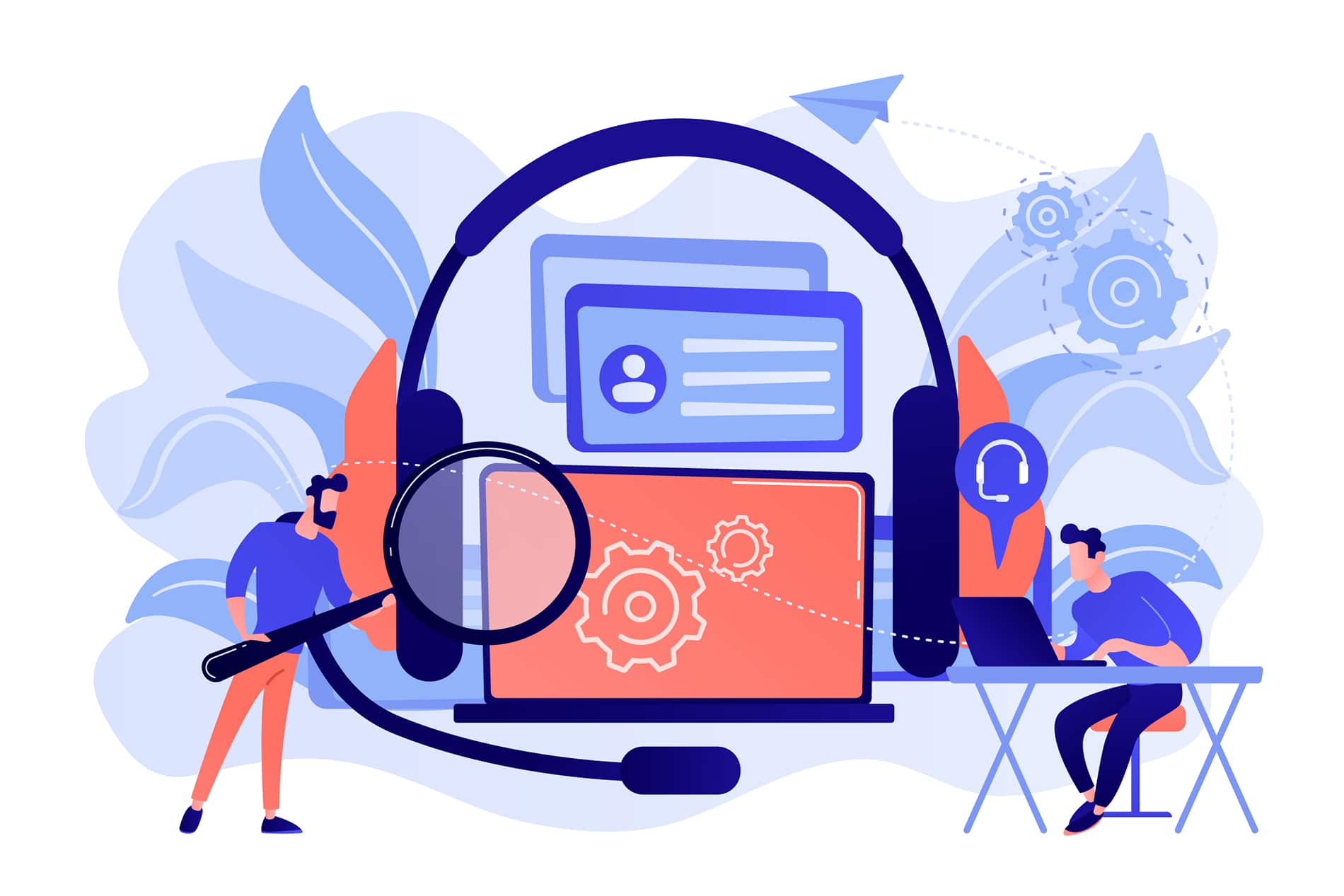In organizations, knowledge is one of the most important assets. However, without processes in place to share and organize your knowledge, it’s hard to recognize the value that it holds. Benefits, like having an effective and efficient problem-solving process, reduced time to proficiency and improved products and services, are just a few that come with the sharing of knowledge.
Knowledge-Centered Service® (KCS) is a methodology that provides businesses with a strategy to best solve problems using knowledge. The Consortium for Service Innovation says “KCS is not something we do in addition to solving problems. KCS is the way we solve problems.”
What is KCS?
KCS is a widely adopted methodology established by the Consortium for Service Innovation. It provides value to organizations and communities by making knowledge abundant and available so that problems can be solved. KCS is often used as part of an IT service management (ITSM) strategy to push people to self-service their IT issues using a knowledge base as part of a service portal.
There are four KCS principles, the first being abundance. When an issue arises, it is either a known issue or a new issue. When someone presents a known issue, they are connected to the content that will help walk them through a solution. When someone presents a new issue, they are connected to a person who will help them solve the problem. This is why an abundance of knowledge is important- it leads to fewer issues that need to be handled by a person.
The second principle of KCS is being demand-driven. When content is created for people to use in order to solve a problem, there should be a reason. Creating content for the sake of creating content is a waste of time because there is a chance that the knowledge article someone writes will never be referenced. Don’t write about what you think people want to know, write about what they actually want to know. This ties into another principle, which is creating value. Articles that are used continuously obviously hold more value than an article that is never looked at. Being intentional about the content you create is how you ensure that value is a focus.
The last principle is trust. With people relying on written information to solve their problems rather than a person, it is incredibly important that they trust what they are reading. If they don’t, they are going to disregard a knowledge base article and go straight to a person to get help. This would completely defeat the purpose of a knowledge base, so it is very important that an organization is responsible for the knowledge that it has in order to gain trust.
KCS for Knowledge Management: The Power of Efficiency and Credibility
Knowledge-Centered Service is a game-changer in the realm of knowledge management, offering a plethora of benefits to businesses. Here’s how KCS can revolutionize your knowledge management:
- Efficient Knowledge Capture: KCS methodology integrates knowledge capture into the problem-solving process, enabling real-time updates and improvements.
- Enhanced Collaboration: KCS fosters a culture of collaboration, encouraging collective problem-solving and knowledge sharing.
- Boosts Productivity: By reducing the time spent searching for information, KCS enhances productivity and performance.
- Improved Customer Satisfaction: With quicker issue resolution and accurate information, customer satisfaction sees a significant boost.
- Reduced Training Time: New employees can hit the ground running with access to the collective knowledge base, reducing training time and costs.
In essence, KCS transforms the way knowledge is managed, creating a dynamic, evolving knowledge base that fuels business growth and customer satisfaction. It’s not just about managing knowledge, but leveraging it to drive results. That’s the KCS promise.
How to Write Knowledge Base Content
When creating content, it is important to get right to the point. These articles are meant to be reference text, not a novel– writing in bullet points is acceptable. Your goal is to be “good enough” rather than completely perfect and thorough.
In reality, 80% of the information that is documented is not used, so it would be a waste of time to create in-depth pieces of text that will never be looked at. You can also use related articles to help you write, you don’t have to make it hard on yourself. If part of the information you need to include in your new content is already out there, do a quick copy and paste of the parts that are relevant.
The goal is to make each article as relevant and useful as possible.
Here are some additional tips for creating knowledge base content using the KCS methodology:
- Focus on creating content that is useful and relevant to your audience. Keep in mind the questions and problems that your customers or users are likely to have, and create content that provides clear and concise answers.
- Use a standardized format for your knowledge base articles. This helps users quickly find the information they need, and also makes it easier to maintain and update your knowledge base over time. A common format for KCS articles is the “Problem-Solution” format, which includes a brief description of the problem and a step-by-step solution.
- Encourage feedback and contributions from your users. KCS is a collaborative methodology, so it’s important to engage with your users and solicit their input. This can help to improve the quality of your content over time, as well as build trust and credibility with your user base.
- Incorporate metrics and analytics to measure the effectiveness of your knowledge base. This can help you to identify gaps in your content and prioritize areas for improvement.
- Develop a strategy for ongoing maintenance and updates to your knowledge base. KCS is a continuous improvement process, so it’s important to have a plan in place for updating and refining your content over time. This can help to ensure that your knowledge base remains relevant and useful to your users.
6 Steps to Getting Started
Implementing Knowledge-Centered Service can involve a lot of moving parts. The following are six steps to help you get started:
- Identify a core team: Having a small core team to help you through the implementation process, as well as the upkeep once KCS takes off in your organization, is essential. When creating the team, look for volunteers, people from customer service areas and those with attention to detail and a passion for change.
- Training: The Consortium for Service Innovation offers a KCS Academy, a KCS Practices Guide, and a KCS Adoption Guide. Additionally, TeamDynamix offers process consulting that you can take advantage of as well.
- Pilot with your core team: Once your team has been identified, you should establish a KCS style guide, solidify processes, roles and permissions, practice maintenance and coach each other. All of this will allow you to avoid confusion and inefficiencies in the future.
- Train your customer service: If you are able, getting trained externally is ideal. Your KCS team has the opportunity to make a real impact on your organization, so it is important that they have proper training. Also, this training will give your team adequate time to grow before branching out to the rest of the organization.
- Branch out: At this point, you can find more volunteers who are ready to implement KCS. If there are no volunteers, start with smaller areas of your business and get those teams on board. Share all the benefits that your pilot team gained from KCS with these new people. Be sure to make it worth their time and make KCS part of their core workflow.
- Spread success: Be sure to document internal knowledge, incorporate KCS when working with outside areas, share articles internally and externally, and broadcast your metrics. Share information like article usage and increased first contact resolution- any metric that will encourage growth.
KCS Knowledge Worker Roles
A knowledge team is a team of knowledge workers who collaborate, establish and maintain content standards and knowledge/incident processes. Within this team there are various roles:
- Candidate- creates and edits articles but does not publish
- Contributor- creates, edits, and publishes internally
- Publisher- creates, edits, and publishes internally/externally
- Coaches- Assigned to knowledge workers and review performance and quality
- Knowledge Domain Expert (KDE)- oversees knowledge area
The Importance of Creating a Useable Portal and Knowledge Base
One of the most efficient ways to improve ITSM and service desk delivery is by removing the need for starting a ticket in the first place—by empowering users to answer their own questions and solve their own problems before an issue requires human intervention.
In general, people would much rather resolve issues themselves instead of submitting a service request and waiting for a response. With the increasing desire for more self-service options, it is essential for those in IT to respond accordingly.
Having a well-organized portal with the ability to search for solutions by keywords or tags goes a long way in quickly helping users get the information they need. Self-service models that deflect calls from the helpdesk to the portal and give users access to an intuitive, timely catalog of technical knowledge not only improve customer satisfaction, they also dramatically reduce the per-incident cost incurred by IT.
Simplicity is key when designing the layout for a client portal. Users should not need to scroll or navigate extensively to find what they are looking for, nor should it take them longer than a few minutes. Outlined information written in understandable, everyday language is essential to encouraging self-service.
Of course, transitioning to a self-service portal does not happen overnight. Such a move requires proper planning, time, and in some cases, new technology. But the ROI potential is there when factoring in the benefits:
- Reduced service ticket volumes.
- Enhanced overall user experience.
- Higher satisfaction throughout the organization.
Self-service has quickly become the norm, so having the right ITSM tool to support your portal and knowledge base is key.
KCS in Action – How One Organization is Using KCS to Improve Service Delivery
Since adopting KCS through TeamDynamix, the University of South Dakota has seen great success. Prior to using TeamDynamix, USD struggled with knowledge residing in silos across various departments as well as poor communication, leading to inefficiencies when delivering service.
Katharina Wymar, head of Project Management, said “We lacked that one platform, that one mindset that allowed us to share knowledge.” That’s when they turned to the solution of a knowledge base so that all of their information could be in a single, easily accessible location.
After building out their knowledge base and implementing KCS they quickly saw an 18% reduction in time logged to service tickets, and after six months there were 31,000 users, 262,000 page views, and 5,000 knowledge articles being included in the base.
Based on USD’s experience Wymar shared these keys to successfully implementing KCS for your IT service management (ITSM) platform:
- Look for executive sponsorship. “This project is going to take time to work through, and our CIO was our biggest supporter,” Wymar says.
- Find the right solution for your organization and get trained.
- Set your KCS processes and develop a communications plan to keep everyone engaged.
- Celebrate success. Reward both the quality and usage of articles. “Make sure you’re recognizing the right behaviors,” Cottrell advises. Don’t turn it into just a numbers game. Encourage people to contribute their knowledge, and reward them for their article edit requests, article usage, and the quality of their articles. Recognize team members as they move up in responsibility.
Learn more about knowledge bases and TeamDynamix here.
This blog was originally published in April 2022 and has been updated with new information.
KCS® is a service mark of the Consortium for Service Innovation™.

